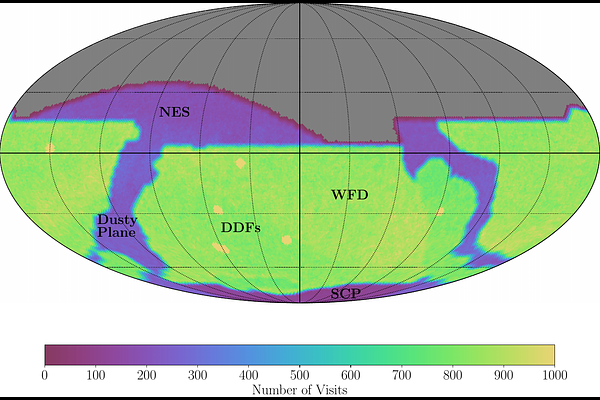Predictions of the LSST Solar System Yield: Discovery Rates and Characterizations of Centaurs

Predictions of the LSST Solar System Yield: Discovery Rates and Characterizations of Centaurs
Joseph Murtagh, Megan E. Schwamb, Stephanie R. Merritt, Pedro H. Bernardinelli, Jacob A. Kurlander, Samuel Cornwall, Mario Jurić, Grigori Fedorets, Matthew J. Holman, Siegfried Eggl, David Nesvorný, Kathryn Volk, R. Lynne Jones, Peter Yoachim, Joachim Moeyens, Jeremy Kubica, Drew Oldag, Maxine West, Colin Orion Chandler
AbstractThe Vera C. Rubin Observatory Legacy Survey of Space and Time (LSST) will start by the end of 2025 and operate for ten years, offering billions of observations of the southern night sky. One of its main science goals is to create an inventory of the Solar System, allowing for a more detailed understanding of small body populations including the Centaurs, which will benefit from the survey's high cadence and depth. In this paper, we establish the first discovery limits for Centaurs throughout the LSST's decade-long operation using the best available dynamical models. Using the survey simulator $\texttt{Sorcha}$, we predict a $\sim$7-12 fold increase in Centaurs in the Minor Planet Center (MPC) database, reaching $\sim$1200-2000 (dependent on definition) by the end of the survey - about 50$\%$ of which are expected within the first 2 years. Approximately 30-50 Centaurs will be observed twice as frequently as they fall within one of the LSST's Deep Drilling Fields (DDF) for on average only up to two months. Outside of the DDFs, Centaurs will receive $\sim$200 observations across the $\textit{ugrizy}$ filter range, facilitating searches for cometary-like activity through PSF extension analysis, as well as fitting light-curves and phase curves for color determination. Regardless of definition, over 200 Centaurs will achieve high-quality color measurements across at least three filters in the LSST's six filters. These observations will also provide over 300 well-defined phase curves in the $\textit{griz}$ bands, improving absolute magnitude measurements to a precision of 0.2 mags.